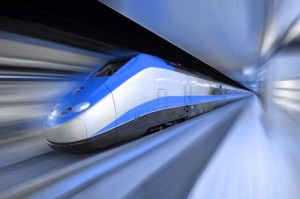5 critical attributes subway video surveillance systems need (part 1)
May 15, 2015
 Every year, billions of people around the world use public transportation to get around the biggest cities in the globe. For example, the metro rail network in Beijing, which encompasses approximately 275 miles of track, carries around 10.3 million people on an average day, according to the latest statistics cited by Total Rail. This makes Beijing’s subway system the busiest in the world, but it is far from the only one that carries millions of people on a typical day. The subways in New York City, Moscow, Sao Paolo, Tokyo and many other major municipalities worldwide deal with many millions of passengers daily too.
Every year, billions of people around the world use public transportation to get around the biggest cities in the globe. For example, the metro rail network in Beijing, which encompasses approximately 275 miles of track, carries around 10.3 million people on an average day, according to the latest statistics cited by Total Rail. This makes Beijing’s subway system the busiest in the world, but it is far from the only one that carries millions of people on a typical day. The subways in New York City, Moscow, Sao Paolo, Tokyo and many other major municipalities worldwide deal with many millions of passengers daily too.
Keeping a lengthy and busy subway system running well all the time is no easy feat. Wear and tear on tracks and trains, plus equipment breakdown, passenger tampering, conductor mishaps and a host of other common problems can quickly bring a smooth-running rail system to a near standstill, inconveniencing thousands as a result. Plus, throw in the far more rare problems of fires, derailments, terrorist attacks and other kinds of major calamities, and the job of overseeing a metro rail system day in and day out without incident becomes that much more difficult.
In order to ensure more oversight over metro rail networks and passengers, many subway system operators have installed video surveillance systems over the past decade or so. Such a solution can yield innumerable benefits, but only if the video technology chosen is equipped to handle the rigors and specific demands brought by subway and light rail system maintenance and management. Before implementing a video surveillance system, metro operators should make sure it has these characteristics:
1) Real-time monitoring
Many of the world’s biggest subway systems cover hundreds of miles and operate either 24 hours a day or very late at night, according to Business Insider. Keeping track of every corner of the network at all times is no easy feat, but a failure to provide constant oversight can lead to disastrous results. For example, when a Blue Line train in Chicago derailed and crashed into an escalator last year, it was around 3 a.m. Over 30 people had to go to the hospital as a result of that incident, according to the Chicago Sun-Times.
As this derailment shows, subway operators need to have constant oversight over rail networks. With real-time monitoring, management teams can see when an issue is about to take place and take steps to prevent anything negative from happening. Video surveillance systems incapable of providing real-time insights or that need to be repaired constantly are just not effective when it comes to transportation infrastructure monitoring.
2) A robust failproof backbone
Considering that a split second can mean the difference between disaster and crisis averted, metro rail system operators need to be able to rely on their video surveillance networks at all times. This extends beyond just getting the highest quality cameras out there, as the front-end hardware has to be supported by a robust connectivity network on the back end. That way, critical video data is able to seamlessly travel to and from cameras and oversight personnel at all times no matter what’s happening.
One way subway operators can be sure their video surveillance system is robust and always ready is by implementing a wireless mesh network. Unlike a traditional linear arrangement, a wireless mesh network uses a wider array of endpoints through which data can travel. That way, even if one node goes down or is plagued by problems, packets always have a path for getting from point A to point B.
Stay tuned for Part Two of this series, where we’ll detail three other key attributes metro rail operators should look for in a video surveillance network.

